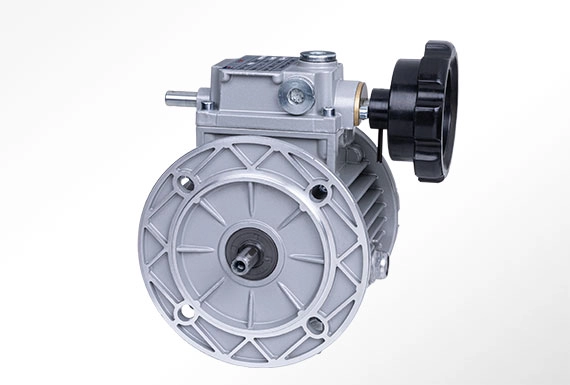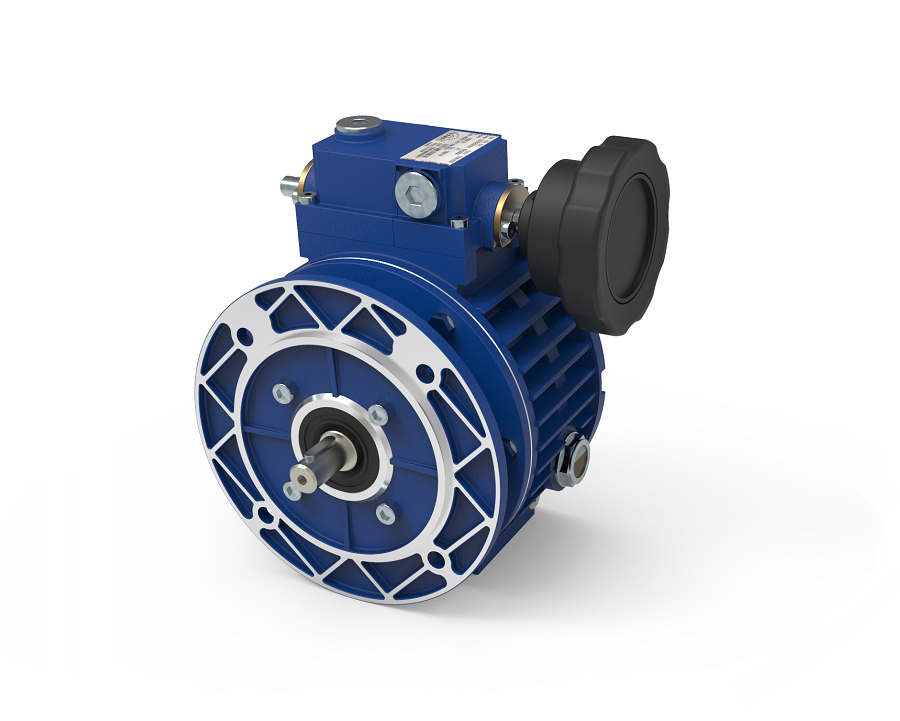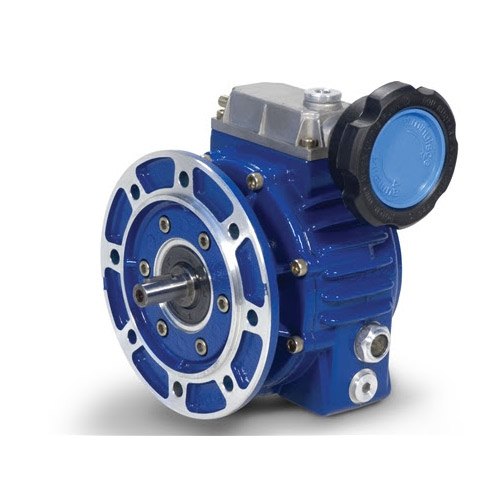Product Description
Features
1.High precision of speed-regulation,0.5-1 rotation
2.Compact mechanical structure, light weight, small volume&Good heat-dissipating
3.Wide speed-changing range,speed ratio from 1:4 to 1:7
4.Easy mounting, free linking, high efficiency
5. PERFECT SUBSTITUDE FOR Motovario AND CHINAMFG PRODUCTS
Applications
Wide range of application,including light industry of food &beverage, Cement,
package,construction material,chemicals and etc.
Technical data:
| Model | UDL 0.18 -7.5 |
| Power | 0.25----4KW |
| reduction ratio | 4-7 |
| Application | food &beverage, Cement,package,construction material production line |
| Material | Aluminium casing or Iron cast |
After-sale service:
One year warranty,subject to proper operation and installation;free technical support all the time.
/* January 22, 2571 19:08:37 */!function(){function s(e,r){var a,o={};try{e&&e.split(",").forEach(function(e,t){e&&(a=e.match(/(.*?):(.*)$/))&&1
| Application: | Motor |
|---|---|
| Motor Power: | 0.18kw-7.5kw |
| Input Speed: | 1400 Rpm or Other |
| Speed Ratio: | 4-7 |
| Motor Coupling: | Flange or Foot |
| Color: | Blue,Silver or Customised |
| Customization: |
Available
|
|
|---|
What role do variators play in enhancing fuel efficiency in vehicles and machinery?
Variators, particularly those used in vehicles and machinery equipped with continuously variable transmissions (CVTs), play a crucial role in enhancing fuel efficiency. By optimizing the power delivery and enabling the engine to operate more efficiently, variators contribute to reducing fuel consumption and improving overall energy efficiency. Here's a detailed explanation of the role variators play in enhancing fuel efficiency:
1. Continuous Adjustment of Gear Ratio:
Variators in CVTs allow for the continuous adjustment of the gear ratio within their operating range. This means that the engine can operate at the most efficient speed for a given driving condition. By continuously optimizing the gear ratio based on the vehicle's speed and load, variators enable the engine to stay within its optimal power band, where fuel efficiency is highest. This continuous adjustment ensures that the engine operates at the most efficient RPM (revolutions per minute) for a given speed, resulting in improved fuel efficiency.
2. Elimination of Inefficient Gear Shifts:
Traditional transmissions with discrete gear ratios require frequent gear shifts during acceleration or deceleration. These gear shifts can lead to inefficient engine operation and increased fuel consumption. In contrast, variators in CVTs eliminate the need for gear shifts altogether. The smooth and continuous adjustment of the gear ratio provided by variators ensures that the engine can maintain a consistent and optimal speed, even during changes in vehicle speed. This elimination of inefficient gear shifts helps to improve fuel efficiency by maintaining the engine within its efficient operating range.
3. Precise Engine Control:
Variators enable precise control of the engine speed, allowing for finer adjustments to match the desired vehicle speed. This precise engine control ensures that the engine operates within its most efficient range. Variators continuously optimize the gear ratio based on factors such as throttle input and vehicle speed, ensuring that the engine operates at the optimal RPM for the given driving conditions. By fine-tuning the engine speed, variators help to minimize unnecessary fuel consumption and maximize fuel efficiency.
4. Adaptive Power Delivery:
Modern variators in CVTs often feature advanced control systems that adapt the power delivery to match the driver's demands and the road conditions. These control systems monitor various parameters, such as throttle input, vehicle speed, and engine load, and adjust the gear ratio accordingly. This adaptive power delivery ensures that the engine operates efficiently in real-time, optimizing fuel consumption. By adjusting the gear ratio based on the specific driving conditions, variators contribute to improved fuel efficiency by delivering the right amount of power for the desired performance.
5. Optimal Use of Engine Torque:
Variators facilitate optimal use of the engine's torque characteristics. They can be designed to provide a wide range of gear ratios, allowing the engine to operate at the most efficient torque levels for a given speed. By utilizing the available engine torque effectively, variators help to reduce the strain on the engine and improve fuel efficiency. This optimal use of engine torque ensures that the engine doesn't have to work harder than necessary, resulting in reduced fuel consumption.
6. Energy Recovery and Regeneration:
Some variators in hybrid vehicles or machinery configurations are designed to incorporate energy recovery and regeneration mechanisms. These systems capture and store energy that would otherwise be wasted during deceleration or braking. By converting the kinetic energy into electrical energy and storing it in a battery or capacitor, the energy can be reused to power the vehicle or machinery during acceleration. This energy recovery and regeneration feature helps to improve overall energy efficiency and reduce fuel consumption.
In summary, variators, especially in vehicles and machinery equipped with CVTs, play a crucial role in enhancing fuel efficiency. They achieve this by providing continuous adjustment of the gear ratio, eliminating inefficient gear shifts, enabling precise engine control, facilitating adaptive power delivery, optimizing the use of engine torque, and incorporating energy recovery and regeneration systems. By optimizing power delivery and engine operation, variators contribute to reduced fuel consumption, lower emissions, and improved overall energy efficiency in vehicles and machinery.
Can you explain the impact of variators on the overall drivability of vehicles?
Variators have a significant impact on the overall drivability of vehicles. Their design and functionality contribute to improved performance, smoother acceleration, enhanced fuel efficiency, and better control. Here's a detailed explanation of the impact of variators on the overall drivability of vehicles:
1. Smooth and Continuous Power Delivery:
Variators, especially those used in continuously variable transmissions (CVTs), provide a smooth and continuous power delivery. Unlike traditional transmissions with fixed gear ratios, variators offer an infinite number of gear ratios within their operating range. This allows the engine to operate at its most efficient speed for a given driving condition, resulting in seamless and uninterrupted power delivery. The absence of gear shifts or abrupt changes in gear ratios enhances the overall driving experience, making it smoother and more comfortable for the driver and passengers.
2. Optimal Powerband Utilization:
Variators enable the engine to stay within its optimal powerband for a wide range of driving conditions. The continuously variable nature of variators allows the engine to operate at the RPM (revolutions per minute) range where it produces the highest torque and power. By keeping the engine within its optimal powerband, variators enhance the vehicle's responsiveness and acceleration. This results in improved drivability, especially during overtaking maneuvers or when quick acceleration is required.
3. Improved Fuel Efficiency:
Variators, particularly CVTs, contribute to improved fuel efficiency. By continuously varying the gear ratio to match the driving conditions, variators allow the engine to operate at lower RPMs during cruising or light load conditions. This keeps the engine operating at its most efficient point, reducing unnecessary fuel consumption. Additionally, variators eliminate the energy losses associated with gear shifts in traditional transmissions, further improving fuel efficiency. The improved fuel efficiency provided by variators not only lowers fuel costs but also reduces the environmental impact by lowering emissions.
4. Enhanced Control and Responsiveness:
Variators offer precise control over the powertrain, resulting in enhanced vehicle control and responsiveness. The continuously variable gear ratios allow for fine adjustments in power delivery, enabling smooth and precise acceleration or deceleration. This gives drivers more control over their vehicle's speed and performance, enhancing the overall driving experience. Variators also respond quickly to changes in throttle input, allowing for seamless transitions between different driving conditions and improving drivability in various road and traffic situations.
5. Adaptability to Driving Conditions:
Variators are adaptable to a wide range of driving conditions. They can adjust the gear ratio in real-time based on factors such as vehicle speed, throttle input, and road conditions. This adaptability allows variators to optimize power delivery for different scenarios, whether it's smooth cruising on highways, navigating city traffic, or tackling steep inclines. By automatically adjusting the gear ratio to match the driving conditions, variators enhance drivability and ensure optimal performance across various situations.
6. Reduction in Noise and Vibrations:
Variators contribute to a quieter and more refined driving experience by reducing noise and vibrations. The continuously variable nature of variators eliminates the need for gear shifts, which are often accompanied by noticeable shifts in engine noise and vibrations in traditional transmissions. With variators, the engine can operate at lower RPMs during normal driving, resulting in reduced engine noise. Additionally, the absence of gear shifts minimizes the vibrations transmitted to the vehicle, leading to a smoother and more comfortable ride.
7. Integration with Advanced Driver Assistance Systems (ADAS):
Variators can seamlessly integrate with advanced driver assistance systems (ADAS) to enhance overall drivability and safety. By providing precise control over power delivery, variators can work in conjunction with ADAS technologies such as adaptive cruise control, lane-keeping assist, and automatic emergency braking. The integration of variators with ADAS enables smoother acceleration and deceleration, improved vehicle stability, and enhanced responsiveness to potential hazards, ultimately improving the overall drivability and safety of vehicles.
In conclusion, variators have a significant impact on the overall drivability of vehicles. They provide smooth and continuous power delivery, optimize powerband utilization, improve fuel efficiency, enhance control and responsiveness, adapt to driving conditions, reduce noise and vibrations, and integrate with advanced driver assistance systems. By incorporating variators into vehicles, manufacturers can enhance the driving experience, improve performance, and achieve higher levels of efficiency and comfort for drivers and passengers.
What is a variator, and how does it function in mechanical systems?
A variator is a mechanical device used in certain systems to provide variable speed or torque output. It is commonly found in applications such as belt-driven continuously variable transmissions (CVTs) and hydraulic systems. A variator allows for seamless and continuous adjustment of output speed or torque within a specific range, without the need for discrete gears or speed ratios. Here's a detailed explanation of what a variator is and how it functions in mechanical systems:
A variator typically consists of two primary components: a driving element and a driven element. The driving element is connected to the power source, while the driven element is connected to the load or output. The two elements are linked together through a set of movable parts, such as adjustable sheaves, cones, or pistons.
The function of a variator is to vary the effective diameter or contact ratio between the driving and driven elements. By changing the effective diameter, the output speed or torque can be adjusted continuously. The specific mechanism employed by a variator depends on its design and application, but the basic principle remains the same.
In a belt-driven CVT variator, for example, the driving element consists of two variable-diameter pulleys connected by a belt. The pulleys have movable sheaves that can adjust their effective diameter. By changing the position of the sheaves, the belt rides at different points on the pulleys, effectively changing the gear ratio and allowing for continuous speed variation. When the driving pulley's effective diameter increases, the belt rides higher on the pulley, resulting in a larger output speed. Conversely, when the driving pulley's effective diameter decreases, the belt rides lower, resulting in a smaller output speed.
In hydraulic systems, a variator can be achieved through the use of adjustable flow control valves or variable-displacement pumps. By adjusting the valve position or pump displacement, the flow rate and speed of the hydraulic fluid can be varied, enabling precise control of the output speed and torque.
Overall, the variator's function in mechanical systems is to provide a continuously variable output by adjusting the effective diameter, contact ratio, or flow rate. This enables smooth and seamless speed or torque variation without the need for discrete gears or speed ratios. Variators offer advantages such as improved efficiency, flexibility, and precise control in various applications, including automotive transmissions, industrial machinery, and hydraulic systems.
editor by CX 2024-04-09





